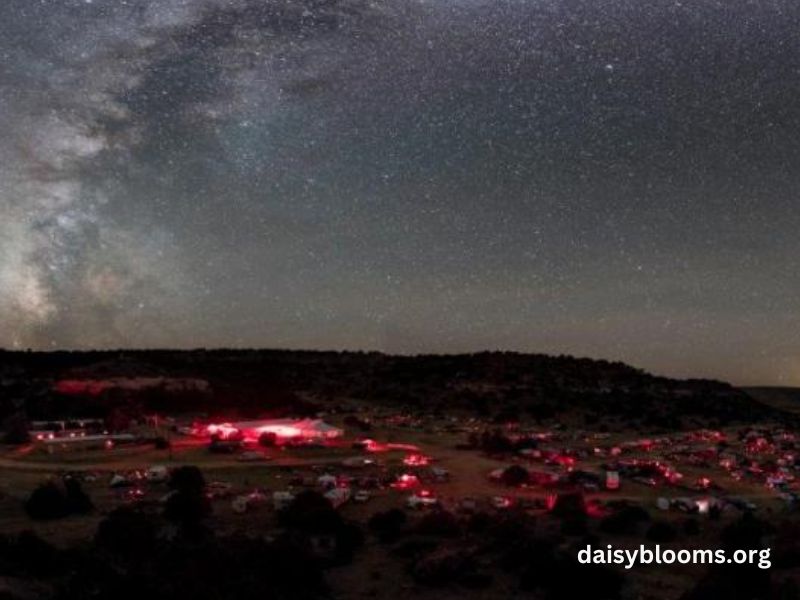Vermont, known for its stunning natural landscapes and vast stretches of forests, offers an environment where stargazing and outdoor activities are highly cherished. However, as with many parts of the United States, Vermont is also grappling with an increase in light pollution. Light pollution is the artificial brightening of the night sky caused by human activities, and it is affecting not only the visibility of stars but also the well-being of wildlife and humans alike. In this article, we’ll explore Vermont’s light pollution situation, its impact on the environment, health, and safety, and what can be done to mitigate it.
What is Light Pollution?
Before diving into Vermont’s specific light pollution issues, it’s essential to define what light pollution is and why it’s a problem. Light pollution occurs when artificial light spills into the night sky, obscuring the view of stars, planets, and other celestial bodies. This is often caused by poorly designed or excessive outdoor lighting, such as streetlights, signage, and building lights.
There are several types of light pollution:
- Skyglow: The brightening of the night sky over populated areas, often the most visible type of light pollution.
- Glare: Intense light that causes discomfort or reduces visibility, such as headlights or streetlights.
- Light Trespass: Light spilling over from one area to another, such as streetlights shining into bedrooms.
- Clutter: Bright, excessive light often seen in city centers with numerous illuminated signs.
For many, the night sky is an important part of Vermont’s rural charm, making the encroachment of artificial light a serious concern for both residents and visitors.
How is Vermont Affected by Light Pollution?
Vermont, with its relatively low population density, is not as affected by light pollution as major metropolitan areas. However, it is still experiencing an increase in skyglow and other forms of light pollution, particularly in and around urban centers like Burlington, Montpelier, and Rutland. In fact, Vermont is experiencing a growth in outdoor lighting, which, combined with its urban expansion, contributes to light pollution.
While Vermont may not have the severe levels of light pollution seen in more industrialized states, the state still faces challenges. In rural regions, where residents are accustomed to darker skies, light pollution can be particularly noticeable. Many towns and cities are struggling with the balance between preserving the natural beauty of the night sky and meeting the demands for urban development and public safety.
The Impact of Light Pollution on Vermont’s Environment
Vermont’s environment is heavily influenced by its natural light cycles. The state’s forests, wildlife, and ecosystems all rely on the natural rhythms of the day and night. Unfortunately, artificial lighting disrupts these processes, leading to various environmental concerns.
Disruption of Wildlife
One of the most significant impacts of light pollution is its effect on wildlife. Many species rely on natural light cues to navigate, hunt, and mate. In Vermont, animals such as fireflies, bats, and migratory birds are particularly vulnerable. Birds, for example, may become disoriented by bright lights during migration, leading them to crash into buildings. Fireflies, whose bioluminescence is essential for mating, may find it difficult to attract mates due to the interference of artificial lighting.
Vegetation and Ecosystem Balance
Light pollution can also affect plant life, particularly in areas like Vermont where the forest ecosystem is so vital. Plants use the night to regulate their biological functions, such as blooming and pollination. When light disrupts these processes, it can harm plant growth, potentially affecting the food supply for wildlife.
Negative Effects on Insects
Insects play a crucial role in pollination and maintaining ecological balance. In Vermont, light pollution can disrupt the natural behavior of nocturnal insects like moths and beetles, leading to declining insect populations. This disruption impacts plant pollination and, in turn, affects the food chain and the broader ecosystem.
The Health Consequences of Light Pollution
The consequences of light pollution are not only environmental but also human. Exposure to artificial light at night has been shown to negatively impact human health.
Sleep Disruption
One of the most well-known effects of light pollution is its interference with sleep patterns. The presence of bright lights during nighttime can disrupt circadian rhythms, making it difficult for individuals to fall asleep. In Vermont, where many people enjoy the serenity of rural life, this can be particularly distressing. Studies have shown that exposure to light at night is linked to various sleep disorders, including insomnia, which can lead to long-term health issues like chronic fatigue and reduced immune function.
Increased Risk of Chronic Diseases
Research indicates that prolonged exposure to artificial light at night can lead to an increased risk of certain chronic diseases, such as obesity, depression, and cardiovascular conditions. This is particularly concerning for Vermont residents, who, despite their proximity to nature, are experiencing more urban-style lighting in both homes and public spaces. The disruption of melatonin, a hormone that helps regulate sleep, is considered a major factor in these health problems.
Mental and Emotional Well-being
Light pollution can also affect people’s emotional well-being. The loss of dark, quiet nights can contribute to stress and anxiety, as individuals are deprived of the peaceful environment that is essential for mental relaxation. Many Vermonters value their connection to nature, and the ability to experience an unpolluted night sky plays a role in reducing stress levels. Light pollution, however, robs them of this opportunity, leading to a decrease in overall happiness and quality of life.
Economic Impact of Light Pollution
Light pollution can also have economic consequences for Vermont. The state’s tourism industry, particularly in rural areas, heavily relies on its natural beauty. Stargazing, hiking, and outdoor activities are a significant draw for visitors. However, as light pollution increases, these opportunities are diminished, potentially reducing the number of tourists who come to enjoy the night sky.
Moreover, energy waste is a substantial issue. Excessive and poorly directed outdoor lighting leads to higher energy consumption, increasing utility costs for residents and municipalities. By reducing light pollution through better lighting design, Vermont could save on energy and resources, contributing to sustainability goals and the reduction of carbon emissions.
Solutions to Vermont’s Light Pollution Problem
Despite the challenges Vermont faces, there are numerous solutions that can help reduce light pollution. Many of these solutions are already being implemented in various parts of the state, but there is still much work to be done.
Promoting Dark Sky Initiatives
One of the most effective ways to combat light pollution in Vermont is to promote dark sky initiatives. Dark sky-friendly policies involve reducing unnecessary lighting and using fixtures that minimize light spill. Several towns in Vermont are already implementing such measures, and organizations like the International Dark-Sky Association (IDA) have been instrumental in promoting dark skies.
Using Better Lighting Fixtures
Upgrading outdoor lighting to more energy-efficient, well-designed fixtures is crucial in mitigating light pollution. Vermont can encourage residents, municipalities, and businesses to use fully shielded outdoor lights, which direct light downward rather than outward or upward. This simple change can significantly reduce light spill and minimize skyglow.
Community Education and Involvement
Raising awareness about the issue of light pollution is essential in promoting change. Community education can help residents understand the negative impacts of light pollution on both their health and the environment. Hosting stargazing events, educating local officials, and distributing information about the benefits of reducing light pollution can help build momentum for further action.
Legislation and Policy Changes
Implementing local ordinances and state-level legislation that regulate outdoor lighting is another solution to reduce light pollution. Vermont can adopt policies that limit the brightness of streetlights, enforce curfews for non-essential outdoor lighting, and encourage businesses to use timers or sensors for outdoor lighting. Such measures would go a long way in curbing unnecessary light pollution.
Conclusion: A Brighter Future for Vermont’s Night Sky
While light pollution is a growing concern in Vermont, it is not an insurmountable problem. With concerted efforts from residents, local governments, and environmental organizations, Vermont can preserve its natural night skies for generations to come. By promoting dark sky initiatives, improving lighting infrastructure, and fostering community involvement, Vermont can strike a balance between urban development and the preservation of its natural beauty.
Ultimately, reducing light pollution will not only restore Vermont’s starlit skies but also improve the health, safety, and well-being of its residents, wildlife, and ecosystems. It’s time for Vermont to shine in a new light—one that allows both its people and the night sky to thrive in harmony.


